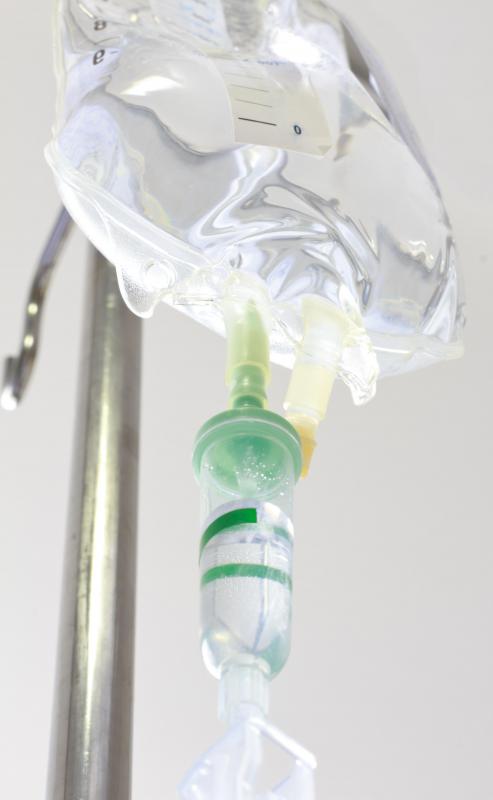At TheHealthBoard, we're committed to delivering accurate, trustworthy information. Our expert-authored content is rigorously fact-checked and sourced from credible authorities. Discover how we uphold the highest standards in providing you with reliable knowledge.
What Is a Cannula Gauge?
The medical term cannula refers to a flexible, plastic tube inserted into the body to withdraw fluids or to deliver hydration, medicine or oxygen. Cannula size is measured in both length and diameter, with the term cannula gauge referring to the size of the cannula's inner diameter. The gauge of a cannula helps determine the rate at which a substance can be infused or withdrawn. This measurement is most important when determining an appropriate intravenous (IV) cannula size or in other situations where accumulated fluid must be withdrawn from the body. For other equipment, cannula gauge is standard, differing only in adult versus pediatric sizes.
Most oxygen is administered via nasal cannula with a standard adult cannula gauge adequate to administer up to 6 liters per minute. A nasal cannula for oxygen administration is a hoop-shaped tubing piece connected to clear plastic tubing of approximately 4 ft (1.22 m) in length. One end has a graduated edge that widens slightly for push-on attachment to an oxygen source. The other end of the oxygen tubing divides into the circular hoop piece. Two short cannulae are placed in the nares of the nose, then the divided hoop is hooked over the top of the patient's ears; it reconnects to a single tube beneath the patient's chin.

Choosing the correct cannula gauge is most important when administering intravenous (IV) fluids, medicines, blood or platelets to patients. The number representing the cannula gauge — which begins, for example, #10 and increases in increments of two to #26 — is inversely related to the lumen of the cannula. In other words, the lower the cannula gauge number, the larger the cannula diameter. Blood products require a cannula gauge of at least #18 to avoid injuring or breaking up red blood cells. In trauma situations where a patient has experienced a major loss of blood, a large volume of IV fluids must be administered very quickly through large cannula gauges.

A tracheotomy, which is a surgical incision in a patient's neck to facilitate breathing, also utilizes inner cannulae of differing gauges that fit within the more permanent tracheotomy hub. These cannula gauges depend upon the patient's age, size and the anticipated permanence of the tracheotomy. The inner tracheotomy cannulae are removable for ease in cleaning secretions from the device and to allow for suctioning of the lower airway, if necessary.
AS FEATURED ON:
AS FEATURED ON:

















Discuss this Article
Post your comments